Publisher: Amy Marson Creative Director: Gailen Runge Acquisitions Editor: Roxane Cerda Managing Editor: Liz Aneloski Editor: Karla Menaugh Technical Editor: Debbie Rodgers Cover/Book Designer: April Mostek Production Coordinator: Tim Manibusan Production Editor: Jennifer Warren Illustrator: Valyrie Gillum Photo Assistant: Mai Yong Vang Photography by Minki Kim unless otherwise noted. Published by Stash Books, an imprint of C&T Publishing, Inc., P.O. Box 1456, Lafayette, CA 94549  Dedication
Dedication  For Mom and Dad in Korea. I realize your love each day. For my husband, Alex, and my three Cs Caylin, Chloe, and Claire. You are my inspiration and my world.
For Mom and Dad in Korea. I realize your love each day. For my husband, Alex, and my three Cs Caylin, Chloe, and Claire. You are my inspiration and my world.
Acknowledgments It all started with a promise to myself: one drawing a day. I am so grateful to C&T Publishing for believing in me (again!) and for beautifully making my half-a-years worth of drawings into my second book. I would especially like to thank Diane, Karla, Liz, Lucy, and Roxane. You are an awesome team; it was a pleasure to work with you. Thanks to Kristyne Czepuryk for testing my quilt pattern and contributing her mini quilt to this book. I am fortunate to call you my friend.
Thanks to Elise Baek, who spent her personal time to test patterns and helped me make a better book. Thanks also to Kristin Esser, who always encouraged me and was the first critic of my designs and drafts. Having a friend who writes and sews makes me the lucky person. Thank you to the companies that supported me with materials to create these projects: Art Gallery Fabrics, Aurifil, Ava & Neve, Clover USA, Dailylike Canada, Fat Quarter Shop, LECIEN Corporation, Ministry of Fabric, Moda Fabrics, OLFA Craft North America, Quilters Dream Batting, Reliable Corporation, Riley Blake Designs, Tilda Australia, and The Warm Company. Your materials are always best friends for my sewing time. Introduction I spent my entire childhood drawing and painting. Introduction I spent my entire childhood drawing and painting.
I was lucky, I realize now, to go to a school with actual art classes and to have a real artist as a teacher. Every day after class, I would go into the art room, where a circle of easels surrounded a table covered with a vase of flowers, some books, and a bowl of apples and pears. I loved the whimsical patterns the sun reflected on the tablecloth. While we students used watercolors, my art teacher painted on canvas with oil paint. I still remember the smell of fresh paint and the scattered watercolors on the cement floor. My white cloth shoes were stained with paint, but I was proud of my colorful shoes; they seemed a symbol of being an artist.
Almost twenty years later, I found myself the mother of three small girls. The days of spending my time solely on art seemed far away. So I satisfied my artistic side by decorating childrens rooms or cutting colored papers into ladybugs and flowers to surprise my little girls. I was happy. I didnt know there was more I could dream about. Then I met my first sewing machine while my husband and I were out shopping.
As a person who never liked numbers and instructions, running my own sewing machine seemed very cool. After several successes of making tea mats, snack bags, and chair covers, I was brave enough to sew something artistic. I sewed a simple house using straight stitches. That was the very beginning of my drawing with thread. I kept drawing and drawing with my now-beloved sewing machine, and I have yet to tire of it. Right after the publication of my first book, Sew Illustrated35 Charming Fabric & Thread Designs, written with my dear friend Kristin Esser, I made a goal: to draw one design a day.
I didnt have a plan. I just wanted to get back to my true lovedrawing. It was a promise I made only to myself so that no one would judge whether I met my goal. But I really did draw one design a day! Next, I sewed my design onto fabric. During that time, I didnt even notice the weather changing outside. I was so happy spending my time solely on art.
It took me almost half a year. If youre like me, it takes more time to decide what to make than to cut the fabrics and sew the pieces together. Now you have a whole book of drawings to choose from! You can start on any page. Make a simple pincushion or bookmark for a teacher, a cozy pillow for a chair, or a wallhanging for your room. After skipping the hardest partdeciding what to drawsewing time will be so much more fun! And if you are a lover of hand embroidery, fuse a piece of fabric on your embroidery to give the artwork just a hint of an accent. It is my wish to pay forward what my teachers gave to me through the pages of this book. Enjoy!  Basic Techniques and Supplies I hope you have fun stitching these fabric-and-thread illustrations.
Basic Techniques and Supplies I hope you have fun stitching these fabric-and-thread illustrations.
They are so easy! Just transfer the design to a background fabric using your favorite method, add bits of appliqu fabric to some elements of the design, and stitch around it all on your sewing machine, using a short stitch length and going as slowly as you wish. In no time, you will have a stitched illustration to sew into a zipper pouch, mini quilt, or another project! You could even hand embroider for an equally charming effect. If you want even more information about the many ways you can use these techniques, see my first book, Sew Illustrated35 Charming Fabric & Thread Designs (by C&T Publishing).  A variety of tools for sewing. While you could also hand embroider using the hoop, you wont need it for the machine-stitched illustrations. You could use the hoop instead to frame your design.
A variety of tools for sewing. While you could also hand embroider using the hoop, you wont need it for the machine-stitched illustrations. You could use the hoop instead to frame your design.
A Supplies BACKGROUND FABRIC Lets say you are at an art class, and you want to choose your paper. Do you like thin sketchbook paper, watercolor paper, or canvas? White solid cotton is like thin sketchbook paper. Linen and linen-cotton mixes are like watercolor paper. You can even choose actual canvas material, which many textile artists use as a foundation. I personally like linen. In my first book, Sew Illustrated35 Charming Fabric & Thread Designs, I used 100% linen on many projects.
I have found, however, that a linen-cotton mix is easier to handle than 100% natural linen, and the lighter color of the mix helps the design stand out. THREADS Thread on fabric is similar to a pen on paper, and choosing a thread is like choosing a pen. Theres no right or wrong answer. Do you prefer fine-tip or bold-tip pens? Do you tend to use bright colors or basic colors like black, red, and blue? The choice is dependent upon your preference and what will work best for your project. I used a 50-weight dark-purple cotton thread on most of my sewing illustrations because I was in the mood for a fine-tip pen. You might ask, Why purple, and not brown or black? I hardly ever choose black because I try to avoid its bold and cold look.
Try any dark-color thread you have around, and you will discover the slightly different feeling that each color creates. To choose a thread weight, keep in mind that 50-weight threads are like fine-tip pens and 12-weight threads are like bold-tip pens. The 40- and 28-weight threads are in between. Try any weight you feel like, but stitch carefully when you use a 12-weight thread! It is very thick. 
Next page
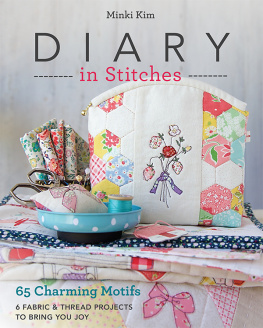
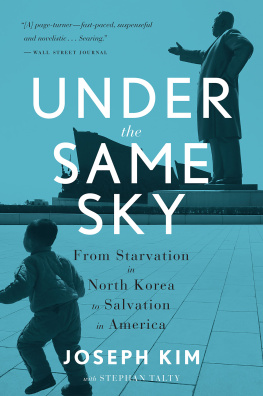

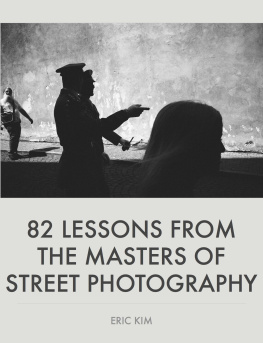
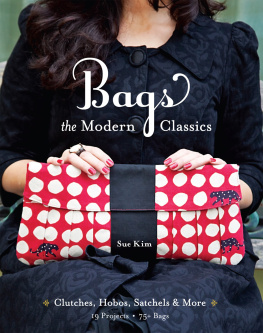

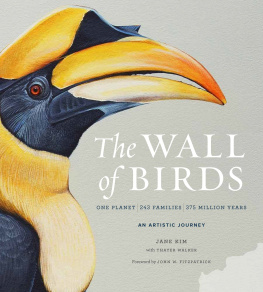
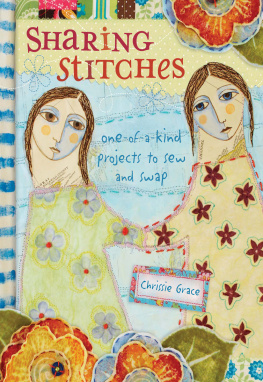
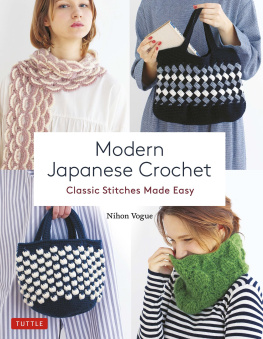

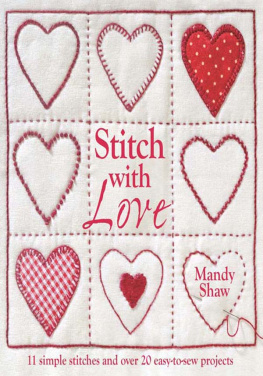
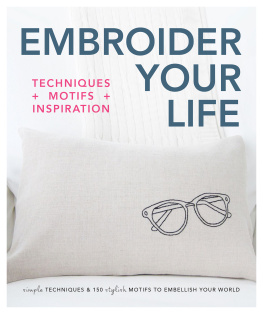
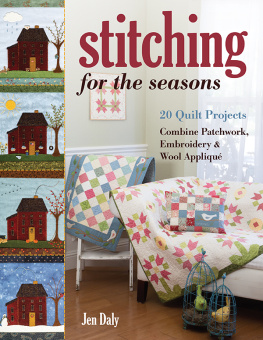
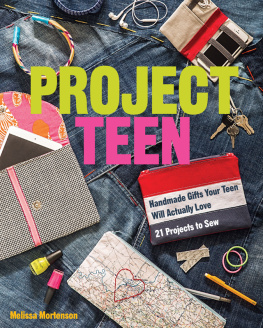
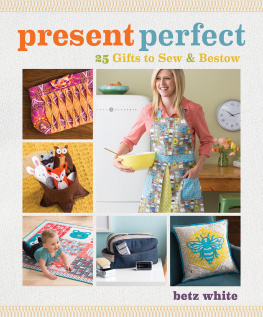

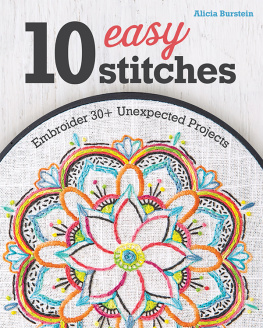
 Dedication
Dedication  For Mom and Dad in Korea. I realize your love each day. For my husband, Alex, and my three Cs Caylin, Chloe, and Claire. You are my inspiration and my world.
For Mom and Dad in Korea. I realize your love each day. For my husband, Alex, and my three Cs Caylin, Chloe, and Claire. You are my inspiration and my world. Basic Techniques and Supplies I hope you have fun stitching these fabric-and-thread illustrations.
Basic Techniques and Supplies I hope you have fun stitching these fabric-and-thread illustrations. A variety of tools for sewing. While you could also hand embroider using the hoop, you wont need it for the machine-stitched illustrations. You could use the hoop instead to frame your design.
A variety of tools for sewing. While you could also hand embroider using the hoop, you wont need it for the machine-stitched illustrations. You could use the hoop instead to frame your design.